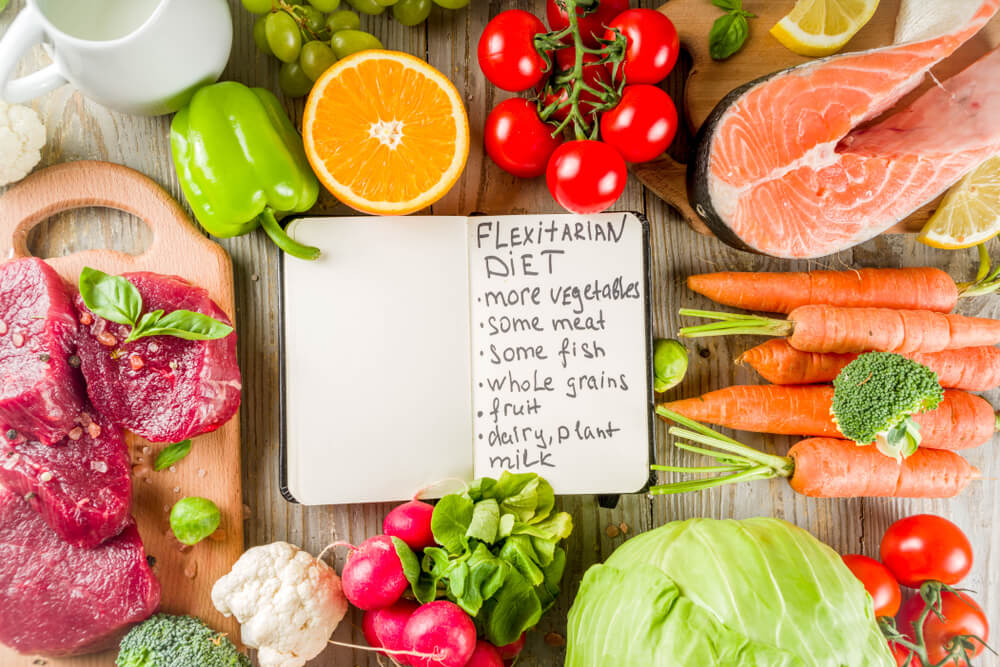Are You Fed Up With The Fad Diets That Lead You Nowhere?
Do You Want To Lose Weight Without The Strict Dieting?
Is There Some Way To Lose Weight Without Giving Up On Your Favourite Food?
Yes, You Need To Try The “Flexible Dieting” and if you are wondering that what “Flexible Dieting” is, then here’s a detailed guide related to it.
What Is Flexible Dieting?
Another popular name for Flexible Dieting is “If It Fits Your Macros” and it, instead of putting restrictions on what you should eat and what you should not, emphasizes on consuming the right amount of calories.
No matter what you eat, but if it comprises of the right amount of carbohydrates, protein and fat, it’s right for you. The “Flexible Dieting Meal Plan” has two major principles – calculating your daily calorie requirement on the basis of your physical activity and fulfilling this requirement with the help of the right ratio of the macronutrients including carbohydrates, protein, and fat.
In order to determine how much amount of each macronutrient you need on a regular basis, you can also use a food macro calculator which can translate the number of macronutrients in calories.
The flexible Dieting is primarily a nutrition system which requires you to track and break down your entire diet in the terms of three macronutrients. By adjusting the ratios of these three macronutrients as per your required daily intake, you can optimize your body’s muscle building potential as well as the metabolism.
Whether your goal is to gain lean muscles, lose weight, burn fat or improve your performance, you can use flexible dieting to achieve your goals because it gives your body the right amount of nutrients which it needs to function effectively.
What Are Macronutrients?
The macronutrients or simply “Macros” is a term which is used for the major nutrients that are needed by the body on a day to day basis. These include carbohydrates, fats, and proteins.
All these nutrients are broken down by the body during the process of metabolism to extract energy required to carry out the various day to day tasks. Each of these macronutrients carries a certain amount of calories. For instance,
1 gram of carbohydrates carry 4 kcal
1 gram of fat carries 9kcal
1 gram of protein carries 4 kcal
Ideally, your regular diet must include 35% or 30% of carbohydrates, 35% or 30% protein and rest fat. For example, if you want to consume 2000 calories, you can consider consuming 170 – 200 grams of carbohydrates, 150 grams of protein, and 65 – 70 grams of fat.
How To Find The Best Macronutrient Ratio For You?
To find out the best macronutrient ratio for you, it’s important to establish what your goals are.
1. Define Your Daily Physical Fitness Goals
Your physical goals imply whether you want to lose weight, gain weight, gain muscles or stay fit. If you want to lose weight, you should decrease your calorie intake and increase your calorie expenditure.
On the other hand, if you want to put on weight, you must focus on increasing your healthy carbohydrate consumption and similarly, if you want to gain lean muscles, it’s vital to include right physical training in your regime apart from watching your calorie intake.
2. Find Out How Much Calories Do You Need
The amount of calories which you need depends on three vital factors:
- Your BMR (Basic Metabolic Rate) value
- Your TDEE (Total Daily Energy Expenditure), that is, how many calories you consume daily.
- Your physical activity levels like whether you live a sedentary, lightly active, moderately active, highly active or extremely active lifestyle
- Your physical fitness goals
Once you calculate your daily calorie intake value after considering the aforementioned factors, you can decrease 500 calories from it to lose weight and increase 150 calories to gain weight.
3. Stay Flexible
As the name suggests, it’s not just “Dieting”. Rather, it’s flexible dieting which implies you need not to follow certain restrictions.
If you want to eat certain foods like ice creams, cupcakes or anything else, you can eat them but ensure that they do not exceed 20% of the total calorie consumption.
Keep on counting your macros, but if you feel like having a chicken burger, you can easily do that. But, make sure that you count its calories as well and adjust your rest of the calorie intake for the day accordingly.
These are a few steps which you must follow in order to find out an ideal macronutrient ration for you. Apart from these micronutrients, it’s important to emphasize on the fiber intake as well to stay healthy and keep on losing weight.
How To Get Started With Flexible Dieting?
When you have calculated that how much calories do you need and how can you segregate these into carbohydrates, proteins, and fats, its time to get started with the flexible dieting.
Try to include as many nutritionally rich elements in your diet as possible. Also, try to get approx 80% of your total calories from the relatively fiber-rich and unprocessed foods.
Some of the foods which offer wholesome nutrition along with various micronutrients in addition to the macronutrients include avocados, sweet potatoes, green leafy vegetables, eggs, chicken, lean meat, nuts, fish, lentils, beans, seeds, whole grains, seeds, berries, mushrooms, Brussel Sprouts and bell peppers.
Apart from focusing on the macronutrients, it’s important to include minerals as well as the vitamin in the diet.
Find out some amazing macronutrient diet recipes which can ideally satisfy your macronutrient requirement without making you feel that you are missing some delicious indulgences and delicacies in order to stay in shape.
